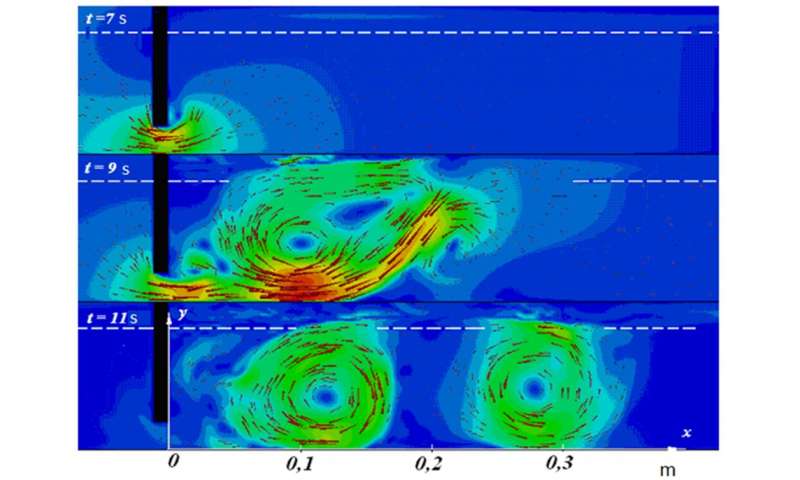TSU is creating mathematical models for suppressing tsunami waves

Konstantin Zhiltsov, a researcher at the TSU Research Institute of Applied Mathematics and Mechanics, with colleagues from the Institute of Applied Mechanics of the Russian Academy of Sciences, is investigating the features of the vortex mechanism for suppressing tsunami waves by underwater obstacles. The scientists carry out numerous experiments in the laboratory and build mathematical models that will help to choose the optimal design and height of the barrier needed to reduce the destructive power of giant waves.
The most deadly tsunami in modern history was caused by the December 26, 2004, Indian Ocean earthquake, with an epicenter off the west coast of northern Sumatra. It was an undersea megathrust earthquake that registered a magnitude of 9.1–9.3 Mw. Indonesia, Sri Lanka, India, Thailand, and other countries suffered from the tsunami. According to various sources, from 225,000 to 300,000 people died.
- A tsunami is one of the most destructive natural disasters on the planet, from which mankind has not yet learned how to defend itself or to fully predict,- said Konstantin Zhiltsov.- Away from the coast, tsunami waves pose no danger because there their height is less than a meter, but near the shallow water and in coastal bays, the wave height can exceed 20 meters. And while at the same time the wave length is reduced, its destructive energy remains almost unchanged.
Some countries are trying to solve this problem by erecting barriers in the coastal zone or in shallow water that rise 10-15 meters above sea level. But it is impossible to predict how high a wave will be triggered by an earthquake that occurred at sea or far away in the ocean.
- To avoid large-scale destruction on the coast, it is not at all necessary to build a multimeter wall and stop a tsunami, - says Konstantin Zhiltsov. - It is important not only to stop the wave but to discharge its energy as much as possible. Our research has shown that in addition to energy reflected from a barrier, a significant part of tsunami energy (up to 50%) can be absorbed by vortex flows, which are formed at the moment when the wave interacts with an obstacle having an optimal design. The physics of these processes is quite complex.
Konstantin Zhiltsov deals with mathematical models, the construction of which helps to study the features of tsunami wave propagation and interactions with various obstacles. In combination with detailed computer calculations, they help to find out how much of the tsunami energy goes back into the ocean, and how much is absorbed in the vortex formations near the obstacles.
In the future, the scientists' work in the aggregate with the results of historical data will enable select the optimal parameters, architecture, and conditions of the location of underwater barriers. Scientists plan to continue their research by using more complex mathematical models to predict the interaction of a tsunami with an obstacle and to estimate the remaining energy of the waves that threaten land.
Provided by Tomsk State University